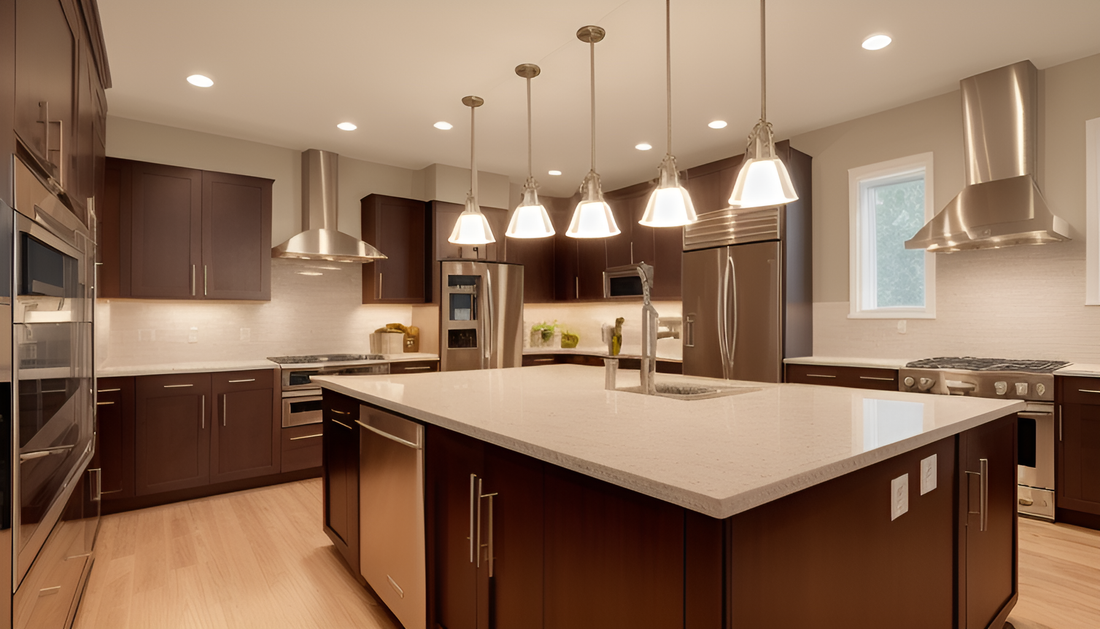The kitchen is the heart of every home, where culinary delights are crafted, and family gatherings are enjoyed. Beyond its practicality, the kitchen is also a space for creativity and inspiration. To truly elevate your cooking experience and make your kitchen a delightful place to be, mastering the art of kitchen lighting is essential. In this blog post, we will explore various lighting techniques to help you achieve a well-lit and functional kitchen that sparks your culinary creativity.
1. Task Lighting for Optimal Functionality:
Task lighting is crucial in the kitchen, as it ensures you have adequate illumination for food preparation and cooking. Under-cabinet lighting, installed directly above countertops, helps to eliminate shadows and provides focused light where you need it most.
2. Pendant Lights: Adding a Touch of Style and Function:
Pendant lights are not only a source of task lighting but also a fantastic opportunity to enhance the aesthetic appeal of your kitchen. Hang pendant lights above the kitchen island or dining area to create a visually striking focal point. Choose pendant styles that complement your kitchen's design theme while providing the right amount of illumination.
3. Overhead Lighting: Striking the Right Balance:
While pendant lights add style, overhead lighting is essential for overall illumination in the kitchen. Consider installing recessed lights or a statement chandelier with adjustable brightness to ensure the room is well-lit without overwhelming the space. Dimmers can be incorporated to customize the lighting intensity based on the occasion and time of day.
4. Illuminate Your Kitchen's Best Features:
Highlight specific features in your kitchen with accent lighting. Use adjustable spotlights or LED strips to draw attention to architectural elements, such as exposed brickwork or decorative tiles. Accent lighting can also be employed to showcase your prized kitchenware or unique artwork, adding a personal touch to the space.
5. Natural Light and Window Treatments:
If your kitchen receives ample natural light, embrace it! Arrange your workspace to maximize the benefit of natural light during the day. Consider installing sheer or translucent window treatments to soften harsh sunlight while maintaining a bright and inviting atmosphere. This connection to the outdoors can uplift your culinary experience.
6. Layered Lighting for Versatility:
Creating layers of light in the kitchen allows you to adapt the ambiance according to different activities. By combining ambient, task, and accent lighting, you can effortlessly transition your kitchen from a bustling cooking area to a cozy dining space or a warm gathering spot for friends and family.
7. Practicality and Safety:
Ensure safety in the kitchen by illuminating key areas, such as the stove, oven, and sink, with ample lighting. Installing motion-sensor lights in the pantry or inside cabinets can also simplify your daily tasks.
Conclusion:
The art of kitchen lighting goes beyond mere illumination; it sets the stage for a delightful culinary journey. By incorporating task lighting, pendant lights, and well-balanced overhead lighting, you can transform your kitchen into a practical, stylish, and inviting space. Accent lighting adds personality, while the integration of natural light creates a harmonious connection to the outdoors. Embrace the possibilities of layered lighting to adapt the ambiance to your needs, and let your kitchen become a hub of creativity and enjoyment for all who gather there.

